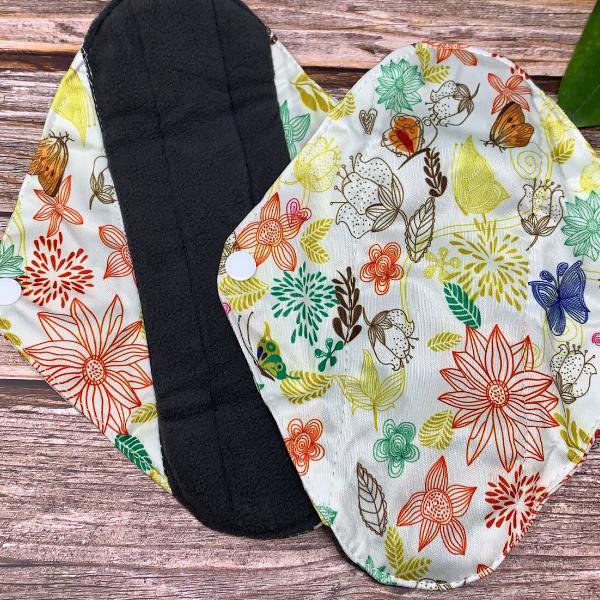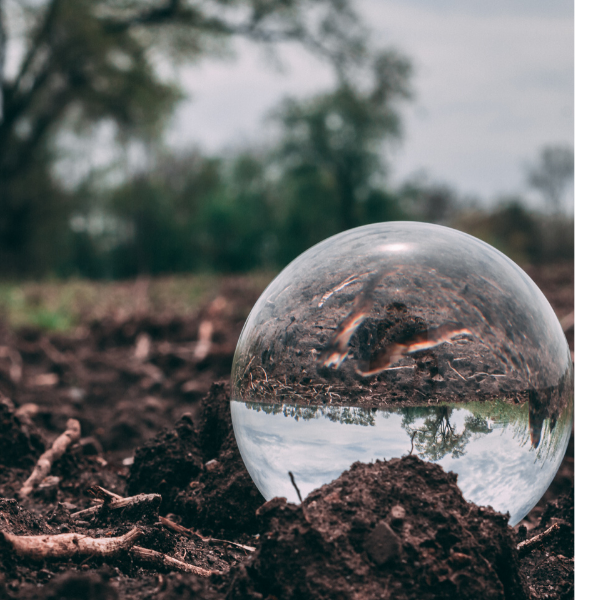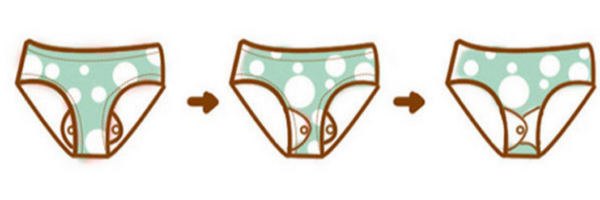As a woman, I never questioned how problematic using disposable sanitary products could be until I read an article mentioning the fact that most commercially made panty liners and sanitary pads are actually 90% made of plastic. Tampons are slightly better, as only about 6% of them are plastic, but that is still a lot of waste in the long term.
This can be incredibly wasteful, as well as incredibly expensive over the long term. And nobody wants to spend thousands on period products over the course of their lives when they do not have to.
So what can we use instead?
There are various products located right here in the UK that can help to make your monthly cycle not only greener but also a lot more cost-effective in the long run.
Swapping to eco-friendly reusable period products can seem very daunting by someone who have never used one, but after personal experience, I can guarantee they are not only as easy as using disposable products, but there’s a high chance that once you get used to it, you will look back and wonder how you could live without for so long!
The most popular and widely available eco-friendly solutions to menstrual pollution available on the market are reusable and re-washable cloth menstrual pads.
REUSABLE MENSTRUAL PADS: BEST FOR HEALTH AND FOR THE PLANET.

It is estimated that an average woman usually uses around 200kg of disposable sanitary pads, tampons and applicators during her menstruating life. To put that in perspective, the last demographic data for 2019 offer s a figure of more than 2 billion females between the age of 15 to 45 worldwide, which is an enormous number combined with 200kg used by each of these individuals, that usually end up either in landfills or flushed down the toilet and into the marine world.
This is a terrifying number if you think that these products cannot be recycled and they, therefore, end up in landfills, generating greenhouse gases that contribute to global warming or are flushed down the toilet, getting their way into polluting our seas and oceans through our sewage system.
Swapping to cloth period pads can be as easy and practical as disposable ones, with the added bonus that can save money and the planet too! They usually come in many shapes and materials: cotton, microfibre, bamboo, PUL etc.
After personally testing a lot of different types of pads, I have finally picked the reusable menstrual pads that I believe to be the best and most efficient ones. In my case, the winners are ones made with a lining of cotton and bamboo charcoal fabric, plus a PUL outer material. This is due to various reasons:
- Bamboo and cotton combined to provide a much more absorbent lining than pure cotton ones. Bamboo is also well known for its natural antibacterial properties and guarantees extra hygiene. Their extra-absorbent nature will keep you dry and fresh for up to 8 hours.
- PUL is waterproof, and while the bamboo and cotton lining can absorb quite a lot, the risk of leaking is still possible. I tried many variations with the outer part made of cotton, microfibre and hemp and unfortunately they all leak. PUL is the only one that is entirely waterproof and creates a safe barrier to any leakage.
- PUL as outer material because it is a lot more resistant than other fabrics. As a family committed to a zero-waste lifestyle I always choose materials based not only on sustainability but also on how long-lasting they are. As pads need to be washed after every use, and even after just a few hours, the ones exclusively made of cotton tend to fray and last a lot less. I wanted something that was not only entirely reusable, but that would also be long-lasting and therefore wouldn't generate additional waste after just a year or even less.
They usually come in different shapes and sizes:
1. PANTY LINERS: Smaller size sanitary liners usually have a layer of absorbent fabric, perfect for light periods, as extra protection for women using a menstrual cup or tampons, and even as light incontinence pads. They are also great for the last days of the cycle.
2. MEDIUM SIZE MENSTRUAL PADS: These pads are slightly bigger than panty liners and come with 2 layers of bamboo and cotton lining, making this a safer absorbing option for women with heavier periods, or the first days of the cycle, as well as incontinence pads.

3. NIGHT CLOTH PADS AND POSTPARTUM PADS: Much thicker and wider, these reusable sanitary towels are specially designed for night usage up to 12 hours. They are also a fantastic eco-friendly alternative to maternity pads, to be used in the days after baby delivery for the eco-conscious mamas out there!
WHAT ARE THE BENEFITS OF USING REUSABLE PERIOD PRODUCTS?
- THEY ARE BETTER FOR OUR HEALTH

Disposable pads and tampons are made primarily of bleached wood pulp or viscose rayon, made from wood cellulose. These materials are then combined with acrylic polymers (SAPs) and surfactant-laced gels that make them super-absorbent. However, being in contact with these synthetic materials tend to cause the skin to be more prone to allergic reactions. This is also made worse by the fact that these chemicals strip away most of the natural moisture produced by the vaginal organ, which consequently causes rashes and can make menstrual pain even worse. Using cotton and natural bamboo fibre against the skin let your hair breath and does not alter the natural PH of your body.
- THEY ARE MUCH BETTER FOR THE PLANET

Disposable sanitary pads require hundreds of years to biodegrade, particularly if wrapped in the plastic packaging commonly provided for this purpose. In fact, every piece of plastic ever made still exists in some form or shape to this day. With so many women around the world having to rely on period solutions every month, reusable products are incredibly important in our fight to tackle plastic pollution and climate crisis. One simple swap, to choose a reusable pad rather than a single-use one, can make a massive difference, one month at a time!
- THEY ARE BETTER FOR OUR WALLETS

Even though it may seem that reusable have a slightly higher initial cost, once you have them they can last for years, especially if properly cared for. I have had mine for 3 years now and still going strong! This is a no brainer, compared to disposable pads that are in fact single-use products, and need to be thrown away after just a few hours every time. Plus, you will be supporting a small business maker with sustainable values and a circular supply chain, rather than a big hearthless corporation!
How to use reusable and washable menstrual pads?
As with every eco-friendly alternative to disposable, commercially made products, unfortunately, these pads can't be expected to be used as a normal pad, this is true with most eco-products as they do require small changes in habit to work properly and functionally. Specifically, these pads are best used with underwear made entirely of cotton (which is also best for health reasons) and that is not too thin on the crotch area. This is because for them to stay safely in place and not move or slide forward, they need to have a safe grip, and synthetic fabric panties or ones with a thinner gusset don't provide enough resistance for the pads to stay in place.
Step by step instructions:

- Place the sanitary towel into your underwear, making sure the bamboo and cotton fabric is positioned upwards.
- Secure the reusable sanitary liner by snapping together the poppers underneath the gusset of your underwear.
- Always use with cotton underwear with medium width gusset, as it will keep the reusable pad safely in place.
- Once used, rinse under cold water folding the pad and gently rubbing the inner lining together. You can do this under the sink or even in the shower. Rinse and rub until there is no more leakage in the water.
- If you are out, simply fold your pad and keep it securely folded with the press studs, put it in a wet bag and wash once home.
- You can either keep your panty liners in wet bag or in a bucket until your next wash!
- In order to increase their lifetime, hand washing or machine washing water at 30 Degree Celcius max is recommended
- Let them air dry; tumble driers are not only bad for the environment but they will also shorten your panty liner durability.
Please remember that wearing a damp or dirty pad may cause irritation or infection.
What if I do not like the feel of reusable pads?
There are many reasons why someone might not like to use a reusable period pad. In this case, there are other options that you might want to try out. For instance, maybe consider using a Menstrual Cup. It is a small silicone cup that fits inside of you and collects the blood. To clean it out, all you have to do is empty it and wash it under the sink and reuse it.
In fact, check out the ones that we sell on our website. We stock both reusable cloth pads, as well as menstrual cups. Either one of these is great at reducing the amount of waste that each of us uses by a large margin. While it may not seem like much in the short term, in the long run it can make a ton of difference.











Leave a comment (all fields required)